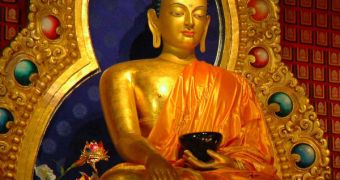People have been trying to achieve heightened states of meditation for millennia, a part of cults present in many religions. But, with Buddhism, meditation is the centerpiece, and some practitioners can reach amazing results, which have been recently also demonstrated scientifically, in a recent issue of the Association for Psychological Science's journal, Psychological Science. Researchers have proven that Buddhist meditation results in a temporary augmentation of a person's visuospatial abilities, in that they are able to retain, for example, an image in their brains for a long time.
A specific type of such meditation is able to increase the practitioners' ability to interpret sound and space, which is pretty outstanding, considering that it's all done through the power of concentration and the mind alone. In a new study, conducted by a team of psychologists led by George Mason University expert Maria Kozhevnikov, it has become obvious that some Buddhist monks are able to retain images in their short-memory for minutes and even hours, while average people can only do so for a matter of a few seconds. After the initial picture is seen, it usually fades from the short-memory within seconds.
One of the analyzed methods of meditation has been Deity Yoga (DY), in which practitioners focus their entire attention capabilities on the face of a deity they see in front of them. This requires a huge effort on the part of the brain, because it has to come up with a very detailed, 3D image of the object of worship, and to also infer on the deity's feelings and emotions. The entourage of the god is also analyzed, and people practicing DY believe it's of paramount importance to take all this in.
Conversely, those who do an Open Presence (OP) type of meditation believe that enlightenment cannot be achieved by simply focusing on a single image. They attempt to evenly distribute their attention to a wide number of events, people and feelings, but without dwelling too much on any of them, and without holding one as more important than the other. These people also do not analyze the feelings that may arise during their meditations.
Together with a number of control test subjects, these two groups of religious practitioners were asked to participate in a number of visuospatial exercises, which involved mentally rotating a 3D structure, as well as identifying a fleeting image within a number of very similar ones. After the first round, when all those in the study performed similarly, all were asked to meditate or perform non-meditative actions for 20 minutes. The second set of tests revealed a significant difference between meditation practitioners and the others, which meant that these results could be used in treating a number of medical conditions of the brain in the future.

 14 DAY TRIAL //
14 DAY TRIAL //